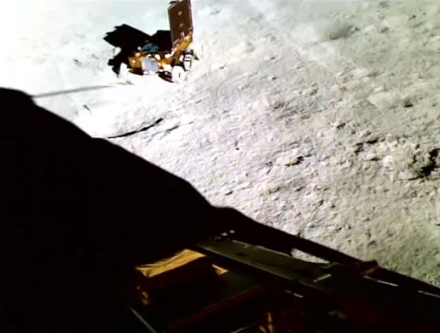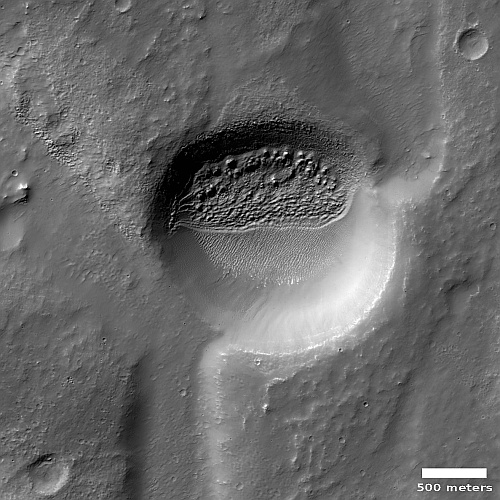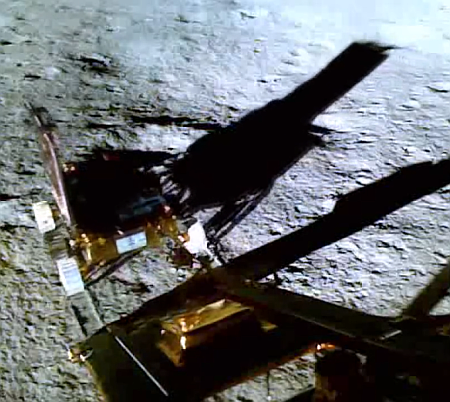Layered glaciers in two small Martian craters
Cool image time! The picture to the right, cropped, reduced, and sharpened to post here, was taken on April 7, 2023 by the high resolution camera on Mars Reconnaissance Orbiter (MRO). It shows what planetary scientists label somewhat vaguely as “layered deposits,” because though the features inside both of these craters strongly resemble glacial ice features, until this is confirmed a good scientist remains skeptical.
I can be more bold, and call the layers glacial in both of these small and very shallow craters (less than a 100 feet deep). To explain this it is important to understand that the lighting and shadows make it hard to distinguish the high points of these layers. Based on the elevation data from MRO, the ground descends to the south, and the mesa in the southern half of each crater’s floor is actually far below the layers and material to the north.
This elevation data suggests that the layered material is surviving best against the crater’s northern interior wall, which at this latitude, about 36 degrees south, will be in shadow the most.
» Read more
Cool image time! The picture to the right, cropped, reduced, and sharpened to post here, was taken on April 7, 2023 by the high resolution camera on Mars Reconnaissance Orbiter (MRO). It shows what planetary scientists label somewhat vaguely as “layered deposits,” because though the features inside both of these craters strongly resemble glacial ice features, until this is confirmed a good scientist remains skeptical.
I can be more bold, and call the layers glacial in both of these small and very shallow craters (less than a 100 feet deep). To explain this it is important to understand that the lighting and shadows make it hard to distinguish the high points of these layers. Based on the elevation data from MRO, the ground descends to the south, and the mesa in the southern half of each crater’s floor is actually far below the layers and material to the north.
This elevation data suggests that the layered material is surviving best against the crater’s northern interior wall, which at this latitude, about 36 degrees south, will be in shadow the most.
» Read more

























